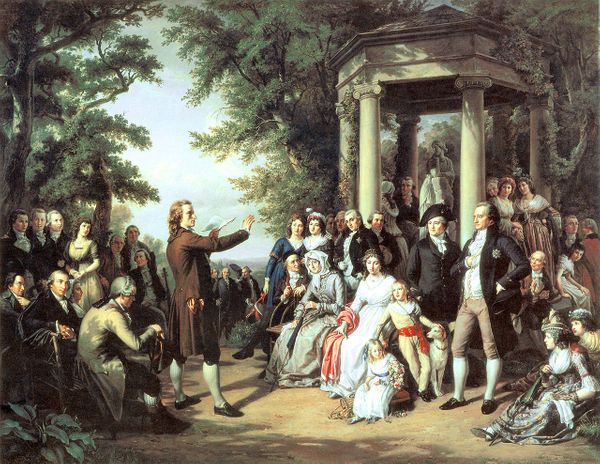Romanticism: Navigating the Depths of Human Expression and Transformation (Also Me)
Romanticism, a captivating movement in literature, art, and philosophy, blossomed in late 18th-century Europe and extended into the mid-19th century. It was a heartfelt response to the sweeping changes brought about by the Industrial Revolution, the Enlightenment, and the resulting shifts in society and politics. Romanticism cherished the individual, the emotional, the imaginative, and the natural, valuing them over the rational, the classical, and the artificial. It also held a deep appreciation for times gone by, particularly the medieval era and folk traditions, drawing inspiration from nature, history, and distant cultures.
Romanticism arose as a means of grappling with the challenges and possibilities of a rapidly evolving world. The Industrial Revolution revolutionized Europe's economy, society, and environment, ushering in newfound prosperity but also presenting new challenges like urbanization, poverty, pollution, and disconnection from nature. The Enlightenment championed reason, science, and progress, but it also questioned traditional authorities in religion and monarchy. The French Revolution, starting in 1789, sought a radical reconfiguration of the old order, advocating for liberty, equality, and fraternity, yet it also unleashed turmoil, violence, and conflict.
Romanticism emerged as an avenue for processing these transformations and for articulating a distinct vision of human nature and society. It pushed back against the notion that reason and logic were the sole arbiters of truth, and that humans were purely rational and self-interested beings. Instead, it emphasized the significance of emotion, intuition, imagination, and creativity, celebrating the distinctive and varied qualities of each person. Romanticism also challenged the idea that art and literature should conform to strict rules and conventions, favoring originality, experimentation, and the freedom of self-expression. It drew inspiration from sources often overlooked or marginalized by mainstream culture, including the Middle Ages, folklore, and the exotic East.
Romanticism was not a monolithic or uniform movement, but rather a vibrant and diverse one, evolving across time, place, and genre. It took on different forms and influences in various countries, like Germany, France, England, Spain, Italy, and Russia. It also found expression in a range of artistic and literary forms, including poetry, novels, drama, painting, music, and architecture. Among its most notable and influential figures were Johann Wolfgang von Goethe, William Wordsworth, Samuel Taylor Coleridge, Lord Byron, Percy Bysshe Shelley, John Keats, Victor Hugo, Alexandre Dumas, Mary Shelley, Ludwig van Beethoven, Francisco Goya, and Caspar David Friedrich.
Romanticism was not only a cultural movement, but also a political and social force that left a profound mark on the course of European and global history. It inspired many movements and ideologies that shaped the 19th and 20th centuries, such as nationalism, liberalism, socialism, feminism, environmentalism, and human rights. Romanticism also played a role in numerous revolutions and conflicts, including the Greek War of Independence, the Latin American Wars of Independence, the Italian Risorgimento, the American Civil War, and the First World War. It also paved the way for new forms of art and literature, such as realism, modernism, and postmodernism, which both challenged and extended the legacy of Romanticism.
Romanticism remains a complex and enchanting phenomenon that resonates with us to this day. It bequeaths us a diverse and abundant heritage of art and literature that can inspire and provoke thought. Moreover, it encourages us to contemplate our own identities, values, and aspirations, and to explore the boundless potential of our imagination, emotions, and creativity.
Peace Out

Comments
Post a Comment